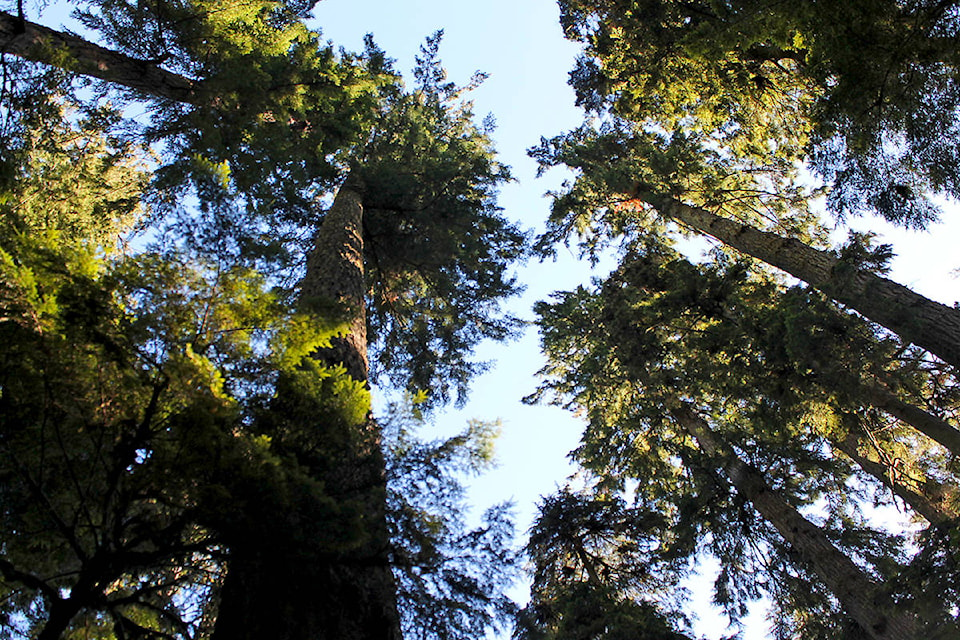By David Clements
As I write this, nearly 2,000 forest fires have burned this year in British Columbia, and with that untold thousands of trees. Many of these fires are still burning.
Because of these fires, residents all across B.C., including here in Langley, are experiencing the dreadful choking pall of wildfire smoke.
Normally here, in the “supernatural” province, we tend to take clean air for granted. And it is the trees themselves that provide oxygen and filter pollutants so we can breathe clean air.
Indeed, hiking among the trees is one of our favourite pastimes in B.C. When you walk through a conifer forest and breathe in deeply you are taking in the beautiful fragrance created by the terpenes in conifer needles.
On Aug. 14, a potential threat to one of B.C.’s most beloved groves on Vancouver Island — Cathedral Grove — was averted.
A pickup truck crashed into a tree and the flames from the vehicle fire started to burn trees nearby. Officials reacted quickly, and two helicopters dropped bucket loads of water to douse the fire before much damage was done.
I had visited Cathedral Grove in July. My family and I thoroughly enjoyed taking in the ancient grove of beautiful trees.
The humungous trees in Cathedral Grove include quintessential British Columbian trees like Douglas-firs and Western redcedars.
When Scottish botanist David Douglas, for whom the Douglas-fir is named, explored the Pacific Northwest in the early 1800s he was astounded by the Cathedral Grove-sized trees that grew everywhere in our coastal region back then.
“A forest of these trees is a spectacle too much for one man to see!” he exclaimed.
The First Nations peoples that helped guide Douglas on his expeditions had appreciated the mighty trees for millennia.
To them the Western redcedar was the “tree of life.” They had many uses for this incredible tree, including clothing, shelter, transportation, and art. To this day, First Nations artisans make use of the Western redcedar as I saw on display this summer in Tofino galleries.
If all of this makes you want to hug a tree, go ahead.
The trees of British Columbia are facing a horrible inferno this summer, and I think they really do need a hug. Likewise, hugs are due to the more than 4,000 firefighters who are heroically standing in the gap to protect us.
David Clements is Professor of Biology and Environmental Studies at Trinity Western University
Like us on Facebook and follow us on Twitter
